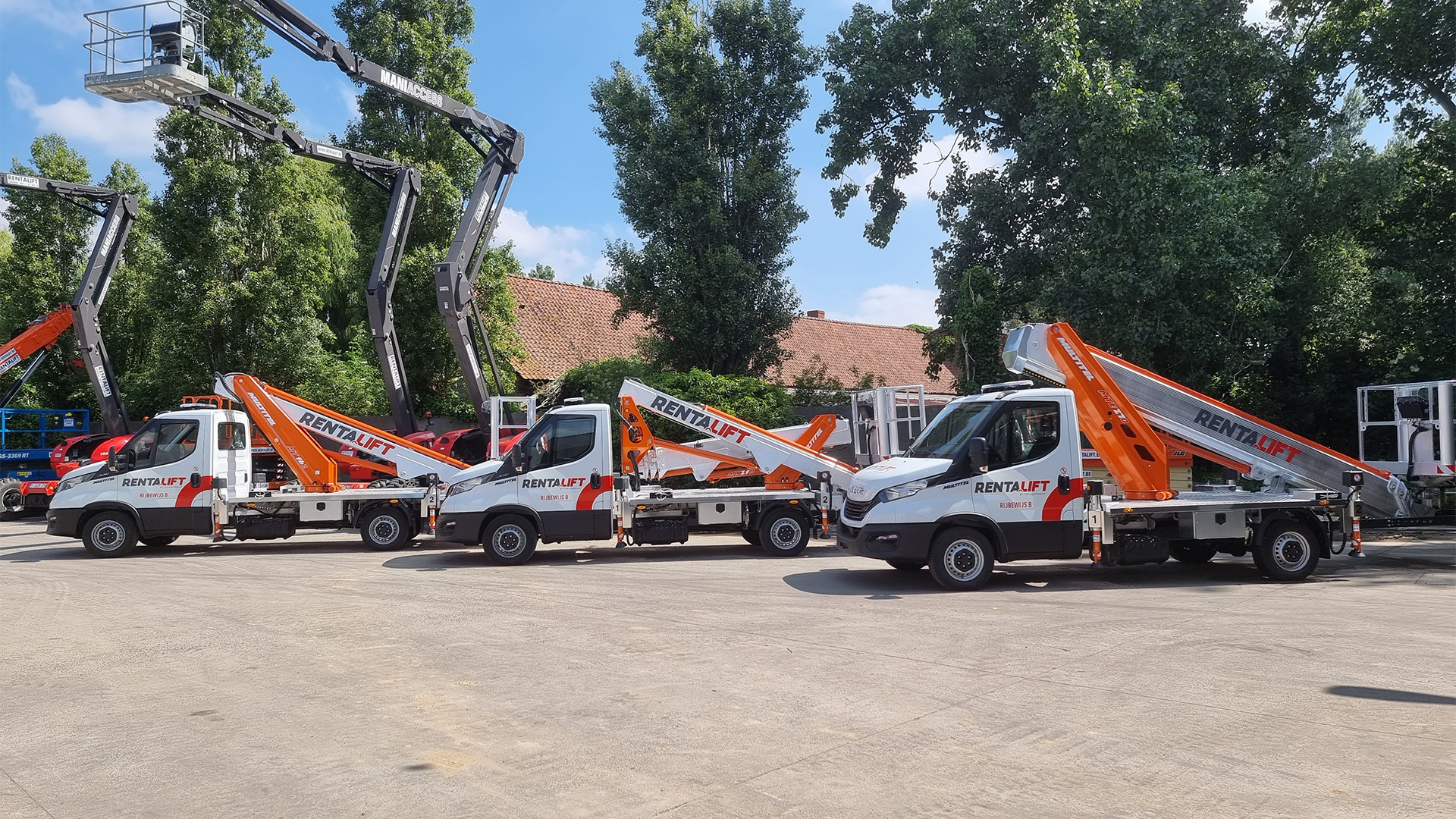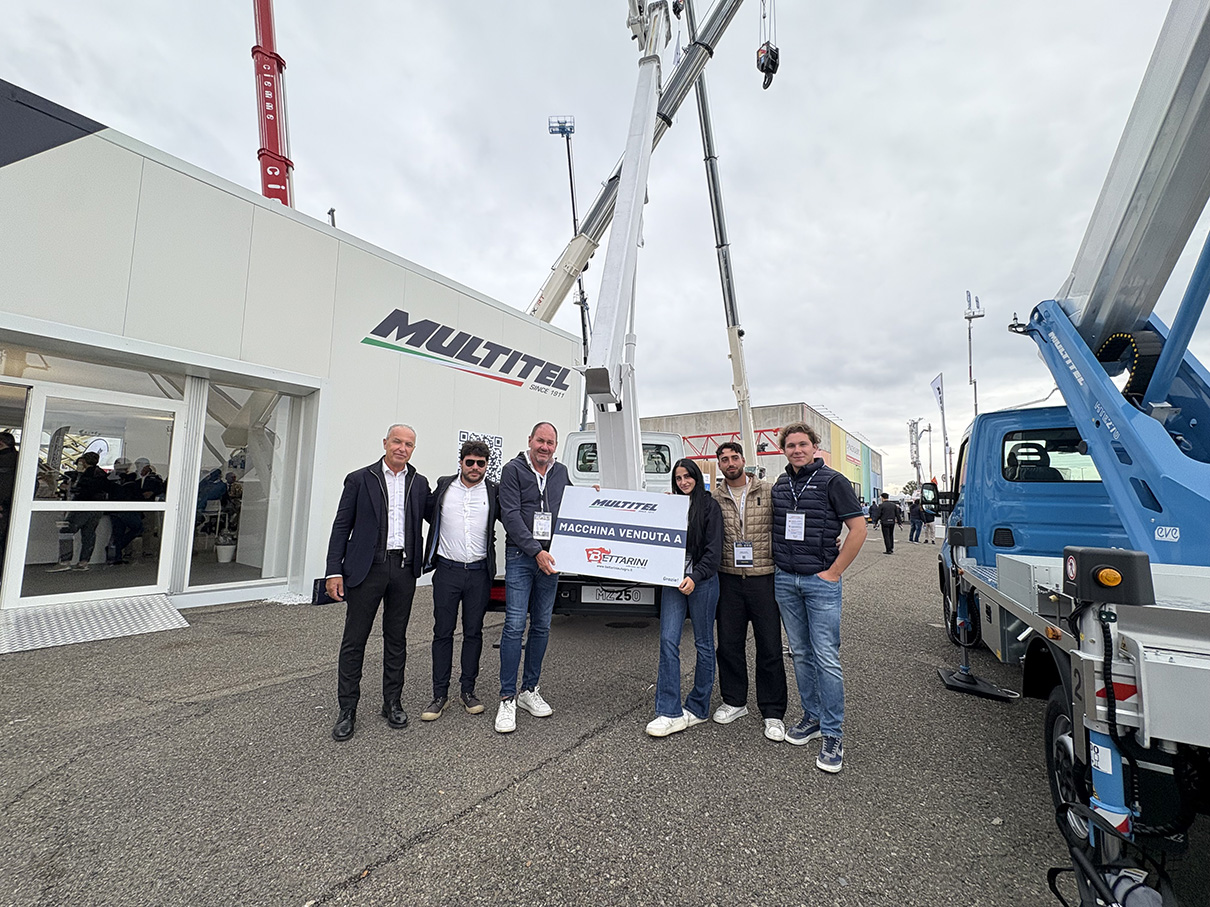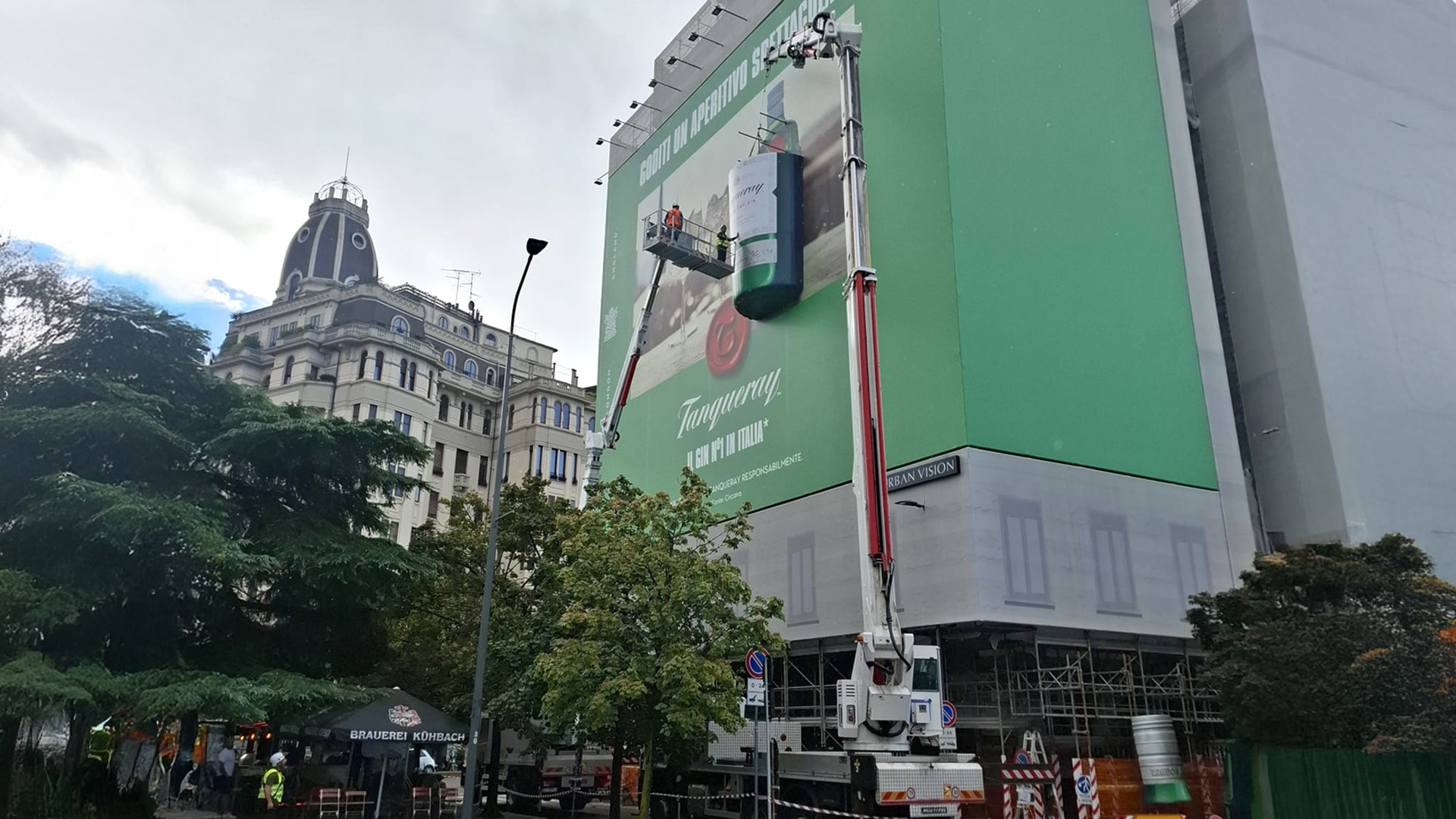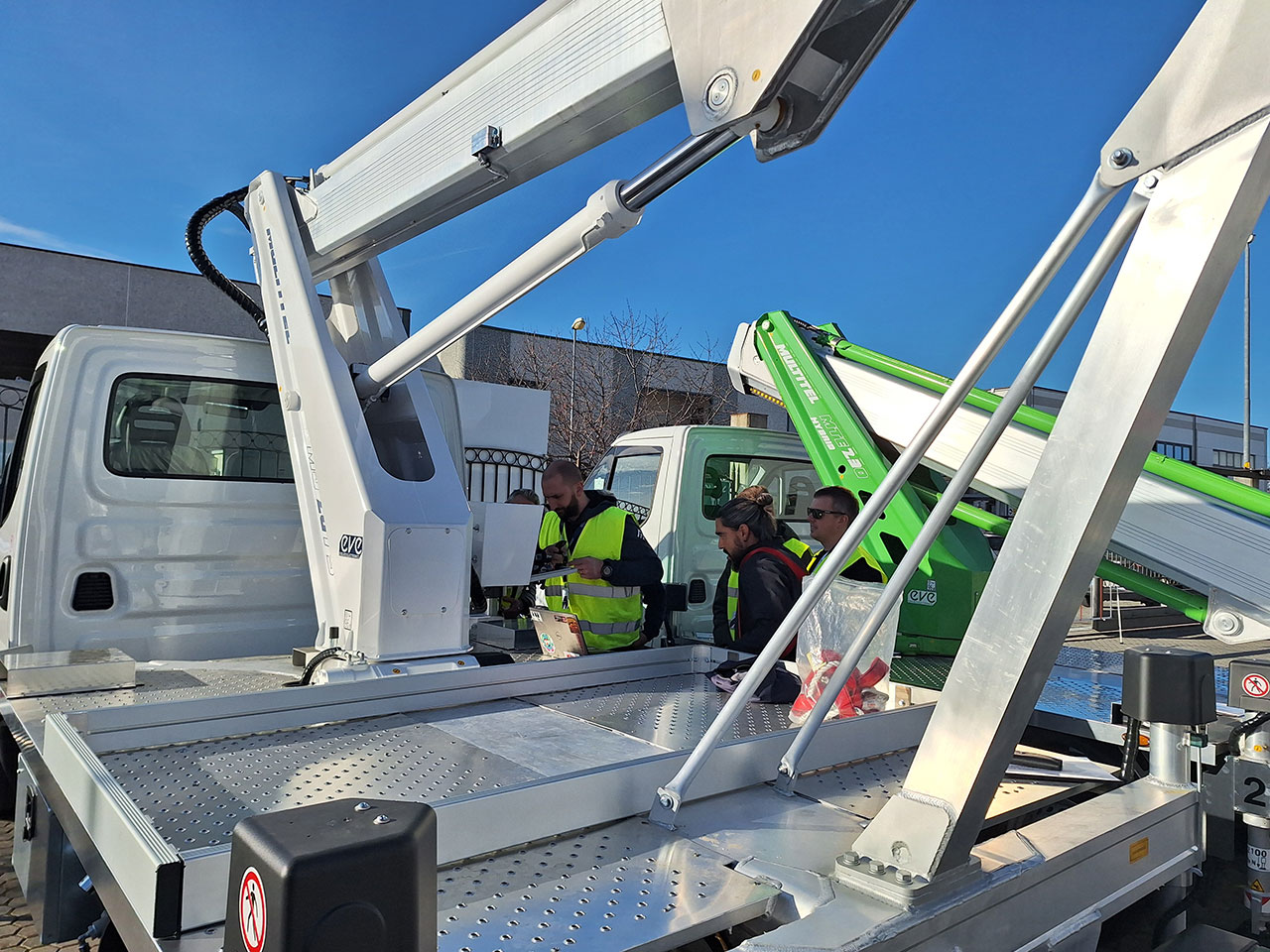Luca Rubiolo, Multitel Pagliero Service manager and Training manager, describes the structure and working methods of the training centre.
When was the Multitel Pagliero Training Centre established?
The training of internal and external staff has always been at the centre of Multitel Pagliero’s attention. The activity, for which I have been responsible since 2012, began in the 2000s and has been organised and systematised over time, with substantial investments that led to the creation of the Multitel Pagliero Training Centre in Manta 5 in 2018.
How is it structured and how many trainers work there?
All courses include a theoretical and a practical component. Up to 24 people can be accommodated comfortably in the main classroom of the Multitel Pagliero Training Centre, which is complete with projector, audio system and a ceiling camera for the real-time transmission of practical tests on components and electronic boards. The Training Centre also has a second smaller classroom for training up to 5 people and an external area where the practical part is carried out on the platforms. Participants are given the technical documentation (manuals) both in paper copy and in electronic format.
2 trainers take care of external personnel such as the mechanics of customers, dealers and authorised workshops; a third trainer, more seasoned and with many years of experience in the company, oversees Multitel’s internal technicians and those of foreign branches. Currently, to align the entire internal network, we are working to ensure that specific training is organised for each new model; we have also created a system where the technicians themselves request training on topics in which they feel less qualified.
How are the training technicians selected? What qualities are you looking for?
The two primary qualities of a trainer are basically language proficiency (especially French and English considering our main customers) and a technical background focused on the automotive and electrical engineering industries. To make the sessions engaging and entertaining rather than just a routine “school lesson,” it is essential that they are good at public speaking and have effective oratory skills. Moreover, the trainers must be somewhat flexible because they have to travel frequently throughout the year. A trainer’s career path can be quite lengthy due to the need to gain knowledge of many platform models that have changed over time and to learn “what goes into” a platform i.e. the materials, electrical components, electronics, hydraulics, and so on, from design to construction.


How many courses are there per year?
Il 2023 si è chiuso con 40 corsi e ad oggi ce ne sono già 50 a calendario. Un numero, però, suscettibile di aumento.
Quanto dura di media un corso e cosa prevede?
By the end of 2023 there had been 40 courses and, as of today, there are already 50 scheduled. This figure could, nevertheless, rise.
What is covered in a course and how long does it typically last?
We offer four different types of courses:
- Instruction in the use of the models, including a thorough examination of each one’s individual advantages. Participants are usually internal or external sales staff and, in some cases, customers.
Average duration ½ to 1 day. - Technical instruction for customers’ mechanics. We host general classroom sessions at our headquarters or dedicated sessions at our customers’ premises. Average duration 1½ to 2 days.
- Technical instruction for authorised workshops, targeted on technicians from the assistance network with which we collaborate. It is organised in Manta to allow them to visit the production plants. Average duration, 2 to 3 days.
- Technical training for newly hired Multitel employees and technicians who provide assistance over the phone or on site. It takes place at the headquarters and the duration is variable.
The course curriculum includes:
- Notes on the history of Multitel Pagliero, where the institutional video is shown
- Focus on the models listed in our catalogue
- Use of diagnostic tools, reserved area, telemetry
- Lessons on the main systems of the platforms, such as boom movement control, outreach limiter, basket levelling, automatic stabilisation, etc.
- Practical tests and simulations on the external platforms
- The most common problems and final test
Do trainers have a general knowledge that applies to all vehicles, or do they have specialised knowledge as well?
With so many models, trainers have a general understanding of all models, with specialisations.
In what ways has training changed over the years?
I think we can say that training evolves thanks to the training itself. It is a learning process that involves those who train and those who are trained. Both learn: the trainers learn about teaching methods and “students” learn about the content they need for their work. From a “technical” perspective, improved organisation facilitates more effective time management and topic coverage. Additionally, computers and technology enable brief online sessions lasting a few hours, focused on specific topics, which are delivered to customers, authorised workshops or dealers thousands of kilometres away. Training used to be more static and was nearly all conducted in a classroom; nowadays, at least 30% of the time is spent on actual platforms where the product can be touched by hand. The use of handouts to clarify more difficult concepts and a wealth of photographic material for visual support has grown in technical documentation.
Fortunately, internal design has prevailed ever since Multitel Pagliero’s aerial platform history began. This has made it possible for us to follow a similar path across several models, which has made training and comprehending the various systems far easier. For instance, we have always called the components that have the same function by the same name; the limit switch that checks whether the rear axle of the vehicle is sufficiently raised is called FC1, both on the latest generation platforms and on those produced in the 80s, regardless of the model. And this philosophy embraces all the main components (solenoid valves, terminals, wires, relays, limit switches, etc.)
In order to continuously improve our product and bring it closer to the needs of our customers, we always make time for a final, crucial moment at the end of each training session to discuss any issues or suggestions for improvements related to the platforms. These issues or suggestions are then discussed in bi-weekly meetings with both the assistance department and the quality/production department.
The training begins in Manta at the Multitel Pagliero Training Centre and continues abroad at the dealer. How is it organised?
The training offered in Manta is initially more focused on products and production processes because dealers need to be as independent as possible in following customers. In contrast, the courses held at the dealers’ sites are more focused on the most popular products in their field of expertise and the most frequently occurring issues. This makes it possible to train the staff to be more reactive in troubleshooting and identifying solutions. It is essential to understand which method to use to find the cause of the failure and therefore solve the problem.
Have the technological advances in the platforms made the work of training simpler or more difficult?
Simpler, also helped by a huge amount of work done in design to unify different systems mounted on various platform models as much as possible. Human-machine interface technology has advanced significantly, making training easier and better as the machine itself provides the necessary information to the user.
How do Multitel technicians receive training at partners’/suppliers’ locations and on proprietary technologies?
We recently attended the training organised by Iveco on their Full Electric vehicle, essential for working on that type of vehicle and for organising internal training. We also participate in more theoretical sessions, such as the one recently organised by Bosch on hydraulic systems. And to improve proficiency in languages, we will soon start an individual online training project in French, English and German.

This is our system that allows us to connect to the platforms remotely. Indispensable for real-time diagnostics, it is essential that it is known both by our technicians and also by our customers. We organise dedicated sessions, even for just a few hours, in person or online, to illustrate the new features or review the entire system together. We try to be flexible in organising the sessions to meet each person’s needs and satisfy them in the best possible way.

Support technicians have an extensive training programme that alternates between theory and practice depending on the person’s technical expertise. Typically, a few days are allocated to training on the various models, which includes testing the platforms and visiting the production plants.
Then about 2 weeks are spent in different production departments – from the assembly of the booms to the assembly department of the hydraulic blocks, up to the actual testing of the platform. We then organise dedicated sessions, both theoretical and practical, to individually address the different systems and understand how they work.
After establishing a solid technical foundation, we work to specialise in a model or system in order to be able to start with the first phone assistance on the most well-known models and issues. Obviously, the length of the training path depends mainly on the technical competence of the person. Concurrently, additional tasks are completed, like writing technical documentation that enables in-depth understanding of different systems and producing content beneficial to the entire team. In the same way, months and months of fieldwork covering all potential scenarios precede the training of an in-house travelling or workshop technician.

Service manager and training manager
I had the good fortune to begin working for this company 20 years ago, where I held positions in both the service and training departments as well as electrical and hydraulic design. I have personally observed Multitel Pagliero’s constant evolution over the years. Since I believe that training is the cornerstone of any successful organisation, my team and I are constantly searching for innovative approaches and cutting-edge tools to help us meet our goals for both internal and external training. In order to maximise equipment use and fix issues, product training is essential. This type of training ensures that technicians and operators fully understand all of the features, functions and technical specifications of the products, enabling efficient and safe use.
Above all, comprehensive product training enables users to fully utilise all of the capabilities offered, increasing productivity and decreasing downtime. By becoming well-versed in the product, you can maximise productivity and safety, avoiding common mistakes and making optimal use of the machines. In terms of troubleshooting, specific training provides advanced diagnostic abilities. Trained technicians can promptly pinpoint the causes of problems and implement the most effective solutions. This not only reduces repair times, but also reduces maintenance costs and improves customer satisfaction thanks to faster and more competent service.
Furthermore, product training establishes a strong foundation of technical knowledge that makes it simple for employees to stay current on new models or versions while upholding the highest levels of professionalism and competence. In a context where technology evolves rapidly, having well-trained and updated staff means a significant competitive advantage. In short, training is not only a means to improve technical skills, but a strategic investment that promotes business growth, innovation and long-term success. It is a cornerstone to creating a resilient organisation that can confidently and competently take on new challenges in the future.
Inoltre, la formazione di prodotto crea una solida base di conoscenze tecniche, che permette al personale di aggiornarsi facilmente su nuove versioni o modelli, mantenendo sempre elevati standard di competenza e professionalità. In un contesto in cui la tecnologia evolve rapidamente, avere un personale ben formato e aggiornato rappresenta un vantaggio competitivo significativo. In sintesi, la formazione non è solo un mezzo per migliorare le competenze tecniche, ma un investimento strategico che favorisce la crescita aziendale, l’innovazione e il successo a lungo termine. Essa rappresenta un pilastro fondamentale per costruire un’organizzazione resiliente, capace di affrontare le sfide future con competenza e fiducia.





